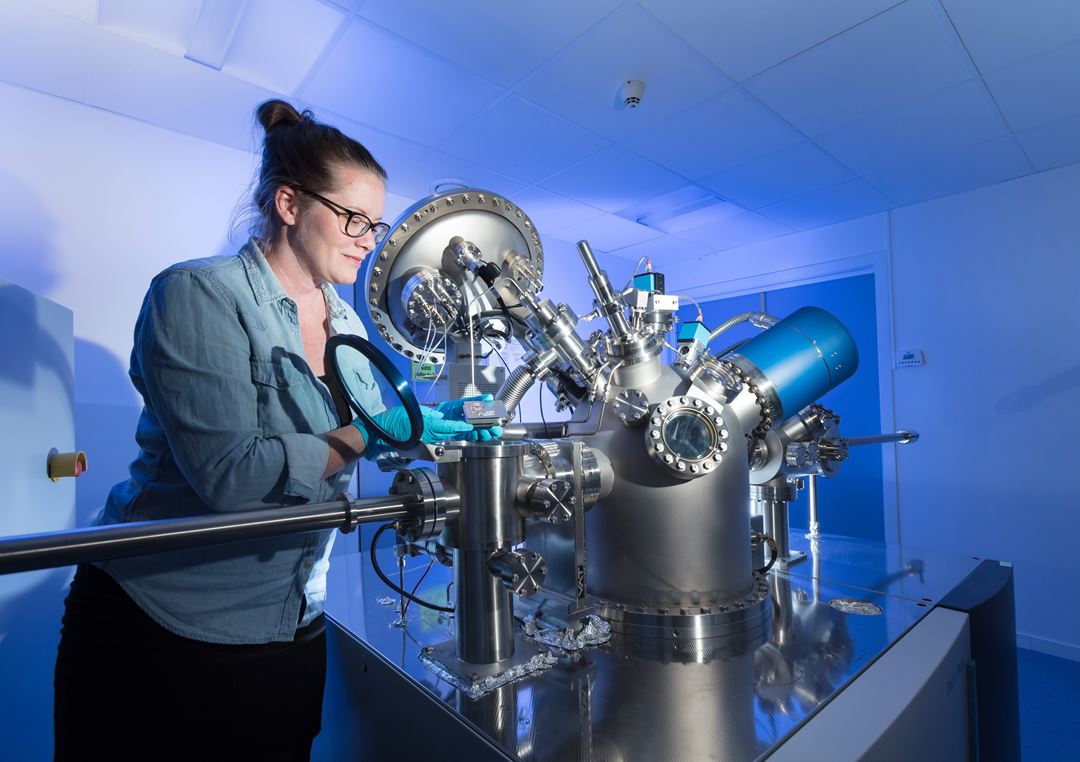X-ray Photoelectron Spectroscopy (XPS)
SINTEF Materials and Chemistry, in partnership with the University of Oslo, operate a state-of-the-art spectrometer for X-ray Photoelectron Spectroscopy (XPS). In-situ and/or near in-situ sample treatment combined with advanced surface analysis are performed by scientific personnel having more than 15 years experience in the field.
Contact person

What information we obtain:
- Qualitative and quantitative elemental analysis of surfaces within a depth of 5-10 nm. Applicable to all elements apart from H.
- Chemical state identification of elements at surfaces and interfaces.
- Compositional and chemical state depth profile with Ar+ ion sputtering over several hundreds of nm or via angle resolved XPS (see figures) over the outermost few nanometres.
Sample requirements:
- Sample dimensions (maximum): height 25 mm, width and length 10 mm
- Vacuum compatibility, surface free of oil, grease, fingerprints etc
- Best sample packing: Al foil with the mat side in contact with sample surface
Typical areas of application:
- Understand/evaluate the corrosion/oxidation of metals.
- Characterise catalysts and study their degradation.
- Investigate nanomaterials and nanostructured surfaces .
- Analyse micro-/ nano-electronics, thin films.
- Study solar and fuel cell materials.
- Examine natural & industrial polymers, adhesives, paints, fillers etc.
- Evaluate the effect of surface treatments and modifications.
Industrial sector that XPS analysis can provide solutions:
All cases where analysis of surfaces and interfaces is important in trouble shouting, process/product quality control and R&D activities. Typical examples are metallurgy, construction, chemistry, energy (gas, oil, renewable), microelectronics, transportation.
Relevant links
Infrastructure networks:
Projects:
